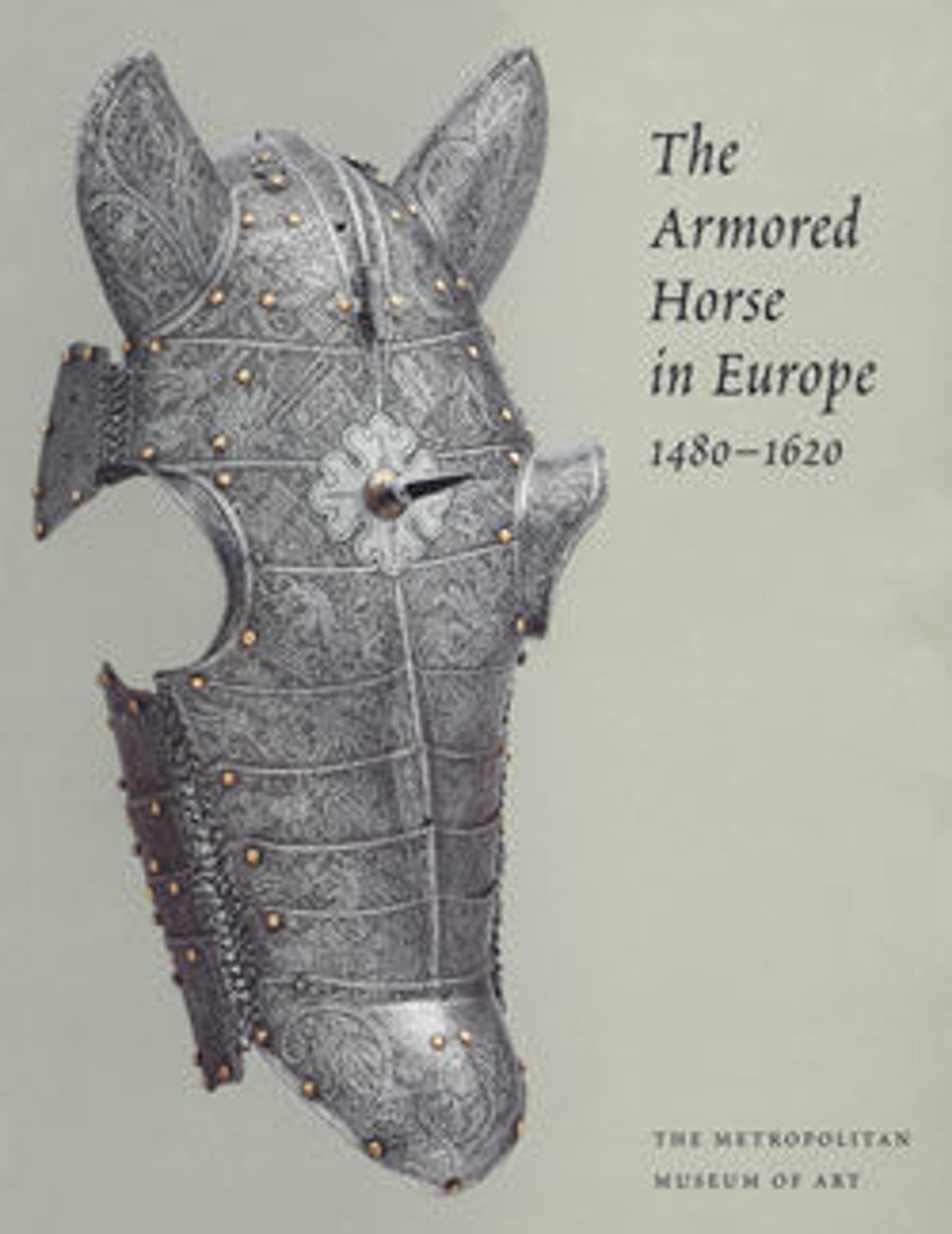Shaffron and Crinet (Horse's Head and Neck Defenses)
This is a rare example of a late Gothic shaffron preserved with its matching crinet. The combination of the shaffron's slender, pointed shape and its radiating ridges, together with the Italian-style armorer's marks, suggests that it is a work alla tedesca (in the German fashion) by an Italian master. The mark, an orb surmounted by a cross above the letters ROM ROM, has been attributed to the Milanese armorer Romain des Ursins, who appears to have supplied armor to the French court. (The ear and eye guards, bottom lame of the crinet, and mail fringe are ninteenth-century restorations.)
Artwork Details
- Title: Shaffron and Crinet (Horse's Head and Neck Defenses)
- Armorer: Attributed to Romain des Ursins (Italian, Milan, recorded in Lyon 1493–95)
- Date: ca. 1480–95, with 19th century restorations
- Culture: Franco-Italian
- Medium: Steel, textile
- Dimensions: 14.25.1661a (shaffron); H. 24 7/8 in. (63.2 cm); W 13 in. (33 cm); D. 9 1/2 in. (24.1 cm); Wt. 4 lb. 4 oz. (1918 g); 14.25.1662 (crinet); L. 33 7/8 in. (85.9 cm.); W. 6 7/8 in. (17.5 cm); Wt. 9 lb. 10 oz. (4360 g)
- Classification: Equestrian Equipment-Shaffrons
- Credit Line: Gift of William H. Riggs, 1913
- Object Number: 14.25.1661a, .1662
- Curatorial Department: Arms and Armor
More Artwork
Research Resources
The Met provides unparalleled resources for research and welcomes an international community of students and scholars. The Met's Open Access API is where creators and researchers can connect to the The Met collection. Open Access data and public domain images are available for unrestricted commercial and noncommercial use without permission or fee.
To request images under copyright and other restrictions, please use this Image Request form.
Feedback
We continue to research and examine historical and cultural context for objects in The Met collection. If you have comments or questions about this object record, please contact us using the form below. The Museum looks forward to receiving your comments.
